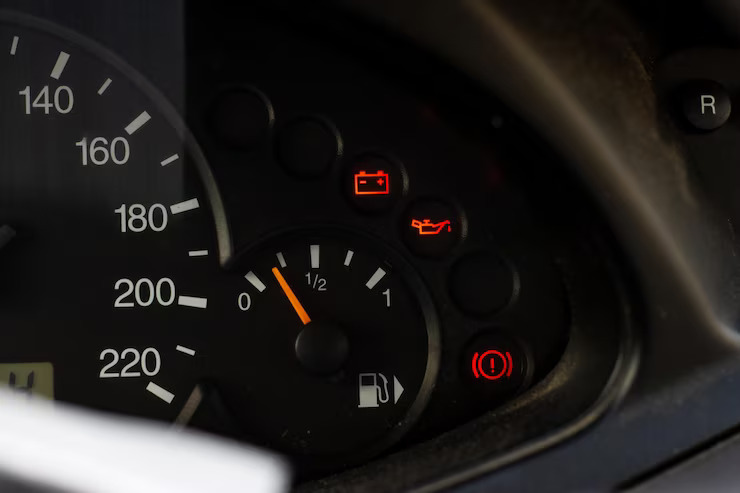The battery is a crucial component of your vehicle’s electrical system, providing power to start the engine and supply electricity to various systems and accessories. A low battery voltage can lead to various electrical issues and affect the overall performance of your vehicle. In this article, we will discuss the diagnosis of low battery voltage warning lights and provide solutions to address this problem effectively.
Diagnosis of Low Battery Voltage Warning Lights:
- Dashboard Warning Light: When the battery voltage drops below a certain threshold, a low battery voltage warning light may appear on your vehicle’s dashboard. This warning light typically resembles a battery symbol or may display the text “BATT” or “LOW BATTERY.” It indicates that the battery is not receiving sufficient charge and may require attention.
- Dim or Flickering Lights: A weak battery can cause headlights, interior lights, and other electrical components to become dim or flicker. If you notice these symptoms along with a low battery voltage warning light, it is likely that the battery voltage is insufficient.
- Difficulty Starting the Engine: A low battery voltage can result in difficulty starting the engine. If you experience slow cranking or the engine fails to start altogether, it may be due to a weak battery.
Solutions for Low Battery Voltage:
- Check Battery Connections: Start by inspecting the battery terminals and cables for any signs of corrosion, loose connections, or damage. Ensure that the terminals are clean and securely tightened. Corrosion can hinder the flow of electricity and lead to low battery voltage. If necessary, clean the terminals using a battery terminal cleaner or a mixture of baking soda and water.
- Recharge or Replace the Battery: If your battery is old or has been discharged repeatedly, it may no longer hold a sufficient charge. Recharge the battery using a battery charger or consider replacing it if it is nearing the end of its lifespan. Consult your vehicle’s manual or seek professional advice to ensure you choose the correct battery for your vehicle.
- Check the Charging System: A malfunctioning charging system can contribute to low battery voltage. The alternator is responsible for charging the battery while the engine is running. If the alternator is not functioning properly, the battery may not receive an adequate charge. Have the charging system tested by a qualified mechanic to identify any issues with the alternator, voltage regulator, or wiring.
- Reduce Electrical Load: Excessive use of electrical components, such as headlights, air conditioning, or audio systems, can strain the battery and contribute to low voltage. Limit the use of these components when the engine is not running or consider upgrading to a higher capacity battery if you frequently use high-demand electrical accessories.
- Drive for Extended Periods: If your vehicle has experienced prolonged periods of inactivity or short trips, the battery may not have had sufficient time to recharge fully. Take your vehicle for longer drives to allow the alternator to replenish the battery’s charge.
- Seek Professional Assistance: If you have tried the above solutions and the low battery voltage warning light persists, it is advisable to seek professional assistance. A qualified mechanic will have the necessary equipment to diagnose and repair any underlying electrical issues causing the low battery voltage.
Regular maintenance and care are essential to ensure the longevity and performance of your vehicle’s battery. By diagnosing the low battery voltage warning light and applying the appropriate solutions, you can address this issue and maintain a reliable electrical system in your vehicle.











